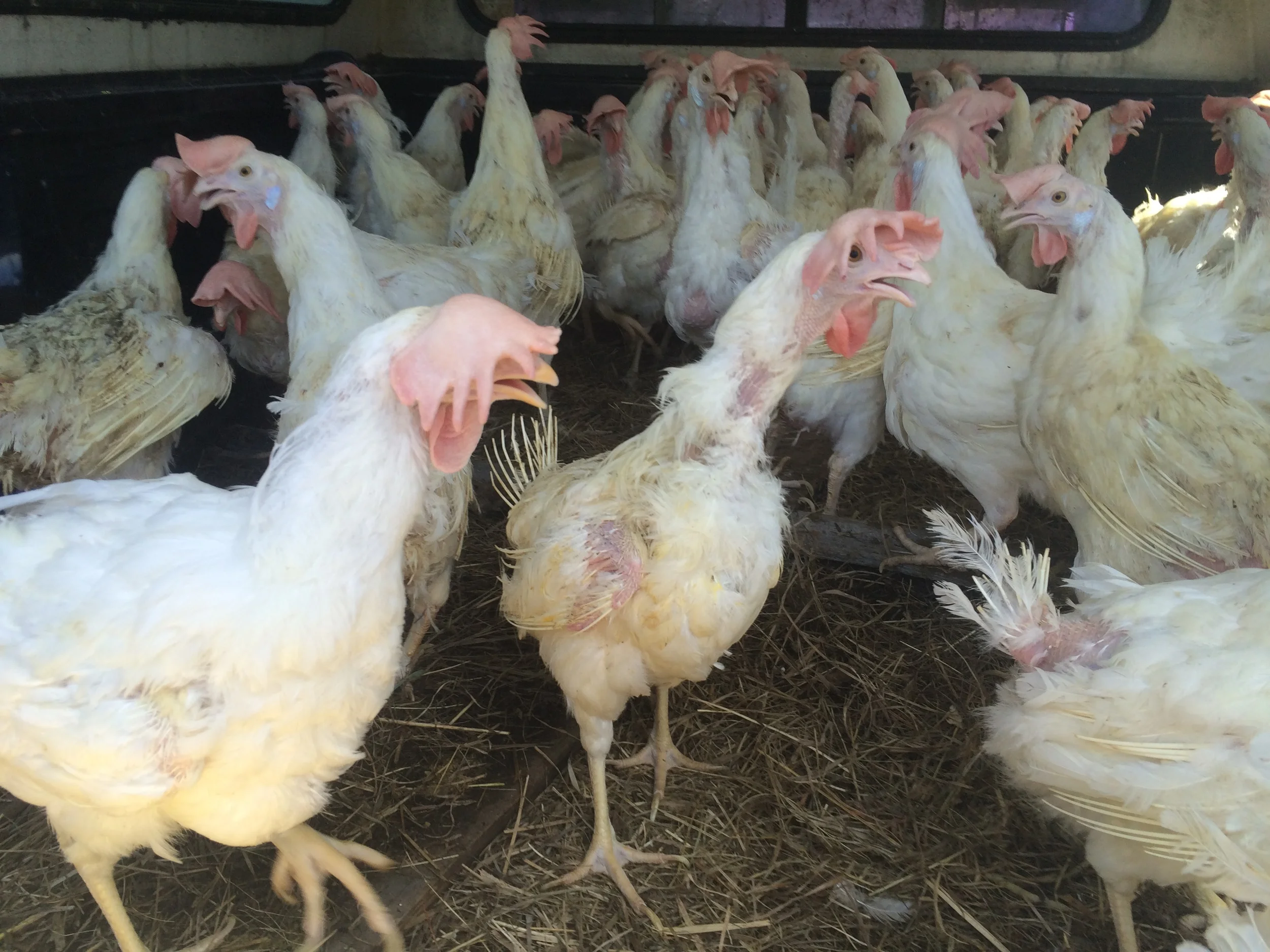There are roughly
280 million egg-laying hens in the United States confined to battery cages
.
Scratch that—279,999,980. Better Farm's team yesterday
rescued 20 such hens
from a local egg farm.
Commercial, egg-laying birds are stuffed into small wire cages stacked in tiers and lined up in rows inside warehouses. In accordance with the USDA's recommendation to give each hen four inches of 'feeder space,' hens are commonly packed four to a cage measuring 16 inches wide.
Because egg-laying chicken breeds have been genetically selected exclusively for maximum egg production, they don't grow fast or large enough to be raised profitably for meat. Therefore, male chicks of egg-laying breeds are of no economic value, and they are discarded on the day they hatch.
The female birds' confined space doesn't allow the ladies to stretch their wings or legs, and they cannot fulfill normal behavioral patterns or social needs like scratching in the dirt, chasing bugs, and taking dust baths.
As you can imagine, constantly rubbing against the wire cages means these birds lose a lot of feathers; and it's not uncommon for the ladies to have lots of bruises and abrasions. In order to reduce injuries resulting from excessive pecking—a behavior that occurs when confined hens are bored, stressed, or frustrated—the front of most laying hens' beaks are cut off.
Laying more than 250 eggs in one year, a laying hen's body is severely taxed (whose wouldn't be?!). They suffer from "
fatty liver syndrome
" and "
cage layer fatigue
"; and, percentage-wise, after about a year most hens in the egg industry are considered "spent" and sent to slaughter. The hens who did nothing but lay eggs usually end up in soups, pot pies, dog food, or similar low-grade chicken meat products.
But the truth is, these hens don't have to be spent! They can still make loving pets, wondrous mini-tillers, voracious composters, initmidating bug-eaters, and (if you're into this sort of thing), lovely egg-layers. And besides—doesn't someone who's worked so intensely day after day deserve a nice retirement?
We drove out to pick up the birds yesterday. The farm we adopted the hens from is a small, family farm that by all accounts is considered a hygienic, high-quality operation. Even so, the birds were kept indoors in very cramped conditions. They had never been outside, never walked on the ground, never known a breeze, or a floor that wasn't a mesh cage.
Standing outside the large barn where the birds were kept, we heard screeching and yelling coming from the chickens inside. And we just weren't prepared for the sight of these birds when they came out. Their beaks had all been clipped, rendering their mouths into a puckered shape uncharacteristic of any bird. Their toenails were so long they had trouble getting around (a few couldn't walk at all). Many had open wounds, all were filthy. They were all missing feathers on their bellies and butts and backs from rubbing up against the cage and each other, and their undercarriages were horribly swollen.





















































































